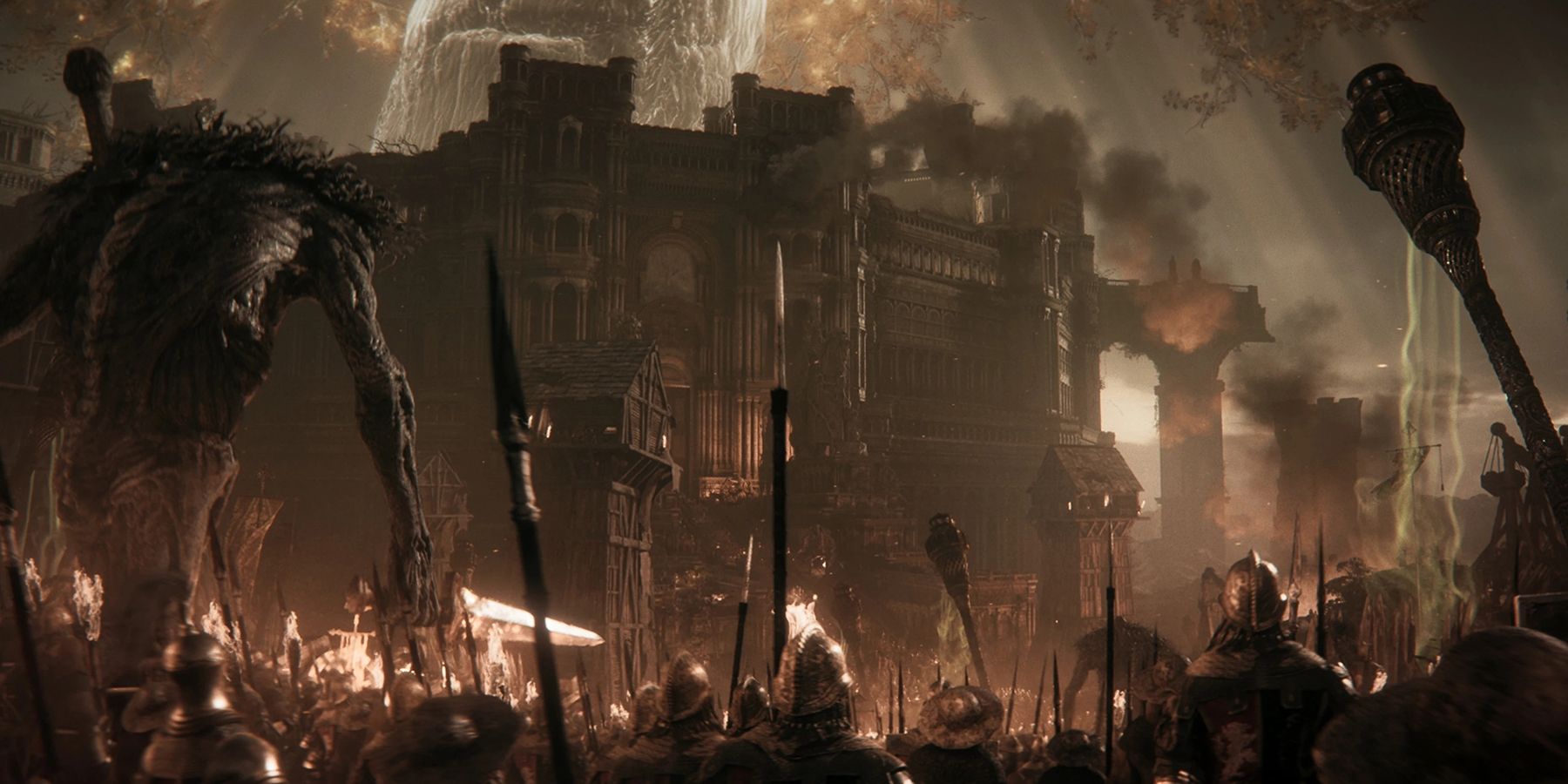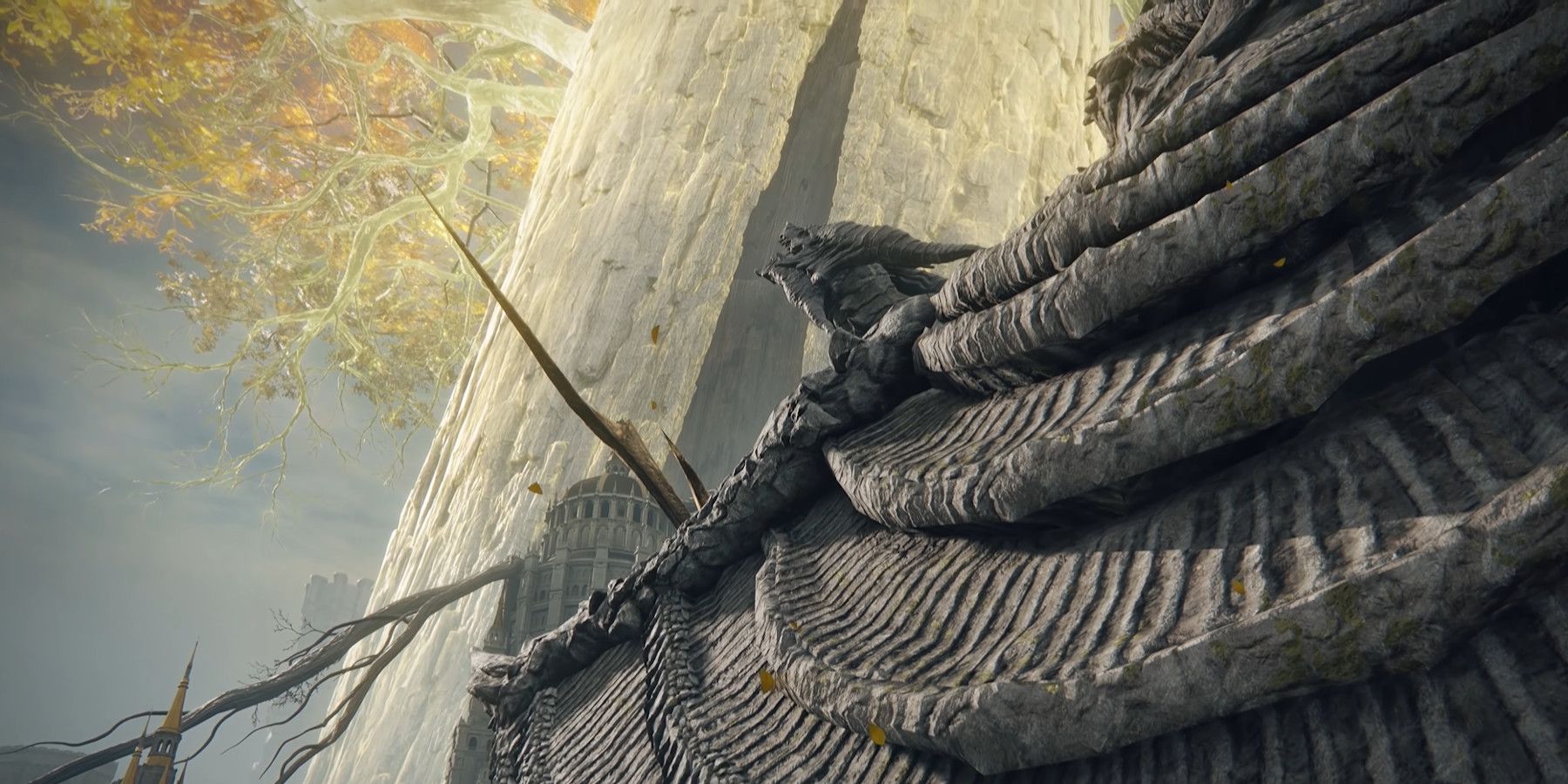Among other aspects of FromSoftware games that have garnered praise, fans will often point out the environmental and visual design are a particular standout. Rightfully so, games ranging from the original Dark Souls to Bloodborne have some of the most recognizable and iconic locations in games. From Demon's Souls onward, FromSoftware RPGs have featured a distinct, Metroidvania design framework that's intelligently structured and interconnected. Exploring each world has evolved over time, especially as Soulsborne games have expanded beyond Dark Souls and experimented with the formula. Elden Ring in particular experimented the most with environmental design.
While the exploratory elements of previous Soulsborne games have come close, Elden Ring is the first game in the subgenre to go truly open-world. World and dungeon design in Elden Ring is still rife with the interconnected and clever design, but all the open-ended and exploratory aspects of the subgenre meld with FromSoftware's environment design to make a truly unique open-world. That's because, in between the non-linear aspects of the game's world are the "legacy dungeons," otherwise known as the regions that cater to the level design players expect of FromSoftware. Arguably the best example of these legacy dungeons is Leyndell, the Royal Capital.
Leyndell, Elden Ring's Best Legacy Dungeon
While the introductory Stormveil Castle and the deceptive Academy of Raya Lucaria are fantastic examples of great dungeon design, the Leyndell Capital acts as a sort-of "greatest hits" of FromSoftware's environment design. Elden Ring's Leyndell Capital incorporates the labyrinthian nature of Bloodborne, the awe-inspiring vistas of Dark Souls and other Soulsborne games, all meshed together with the non-linear exploration that permeates throughout Elden Ring. At this point, players are well aware that they need to reach the Erdtree to become Elden Lord, and there's a degree of a golden path that players can follow if they strictly want to rush to Godfrey and Morgott.
That being said, the actual exploration and completion of Leyndell is entirely non-linear and largely optional. As long as players eventually reach Erdtree Sanctuary and face Godfrey's specter, it doesn't matter what routes players take in between. They could explore the city's main streets and fight the Erdtree Avatar, or they could take the backstreets and take on the various Leyndell knights scouring the corners of the dilapidated city. Some solid loot from Elden Ring can also be found in Leyndell, among other interesting secrets like the Leyndell Catacombs and the original Roundtable Hold, which encourages players to continue exploring the mysterious city.
The Importance of the Capital City in Elden Ring
Outside of the gameplay benefits, Leyndell is also one of the most beautiful and impressive locales in Elden Ring as well. FromSoftware implements a ton of sweeping vistas and "step out" moments similar to Bethesda's open-world design, and Elden Ring is no different. When Tarnished step across the rampart into the Leyndell Capital, it's one of the most enticing and exciting vistas presented to the player. The vastness of the city is eye-catching, but what players come to realize over time is that nearly everything shown is traversable. All of the buildings and geometry seen at that vista, outside of exploring irrelevant and random structures, can be visited by players.
The story of Leyndell, both before and during the events of Elden Ring, is also very interesting. Prior to and during the Shattering, the Leyndell Capital was the subject of siege from nearly every corner of the Lands Between. Many desired the titular Elden Ring, whether it was the many demigods, the mysterious Gloam-Eyed Queen, Marika and/or Radagon, among the many others seeking the title of Elden Lord. When the Tarnished reaches Leyndell, the capital city is far less chaotic than it seemingly used to be. However, when Melina sets the Erdtree ablaze, players become the impetus for the ultimate destruction of the city, transforming it into the Ashen Capital.
Granted the changes aren't super significant beyond covering the entire capital with mountains of ash, but from a narrative and atmospheric perspective, it's incredibly impactful. It's the final region players see before venturing inside the Erdtree to finish the game, and it's the final destruction resulted from the Shattering before the Tarnished assumes the role of Elden Lord, alongside the ending of the player's choosing. Leyndell plays a pivotal part in the environmental storytelling of Elden Ring, showcasing both the elegance of what was prior to the Shattering, as well as the desolate and apocalyptic FromSoftware atmosphere that fans have come to love.
Elden Ring is available now on PC, PS4, PS5, Xbox One, and Xbox Series X/S.



